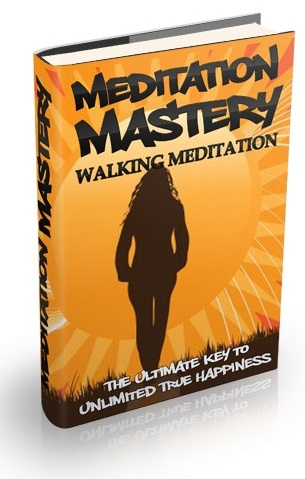Meditation Mastery, Vol. 5: Walking Meditation – $2.50

Most people in the West associate meditation with sitting quietly. But traditional Buddhist teachings identify four meditation postures: sitting, walking, standing and lying down. All four are valid means of cultivating a calm and clear mindfulness of the present moment. The most common meditation posture after sitting is walking. In meditation centers and monasteries, indoor halls and outdoor paths are often built for walking meditation. On meditation retreats, regular walking meditation is an integral part of the schedule. In practice outside of retreats, some people will include walking as part of their daily meditation practic — for example, ten or twenty minutes of walking prior to sitting, or walking meditation instead of sitting.
The Buddha spoke of five benefits of walking meditation. In the order that he listed them in this Sutta, they are as follows: walking meditation develops endurance for walking long distances; it is good for striving; it is healthy; it is good for the digestion after a meal, and the concentration won from walking meditation lasts a long time.
The first benefit of walking meditation is that it leads to endurance in walking distances. This was particularly important at the time of the Buddha when most people travelled by foot. The Buddha himself would regularly go wandering from place to place, walking up to sixteen kilometers a day. So he recommended that walking meditation be used as a way of developing physical fitness and endurance for walking long distances. Forest monks these days still go wandering; it is called tudong in Thai. They take their bowls and robes and walk, seeking out secluded places to meditate. In preparation for wandering, they progressively increase the amount of walking meditation so as to develop their physical fitness and endurance. They increase the number of hours of walking meditation a day to at least five or six hours.
Walking meditation can serve as a powerful bridge between meditation practice and daily life, helping us to be more present, mindful and concentrated in ordinary activities. It can reconnect us to simplicity of being and the wakefulness that comes from it.
ADDITIONAL INFORMATION:
eBook Format: Adobe PDF
Platform: Windows and Macintosh
Download Format: Compressed .ZIP
File Size: 481 KB
Master Resell Rights: Yes!
You will get an instant download of this product after purchase.





